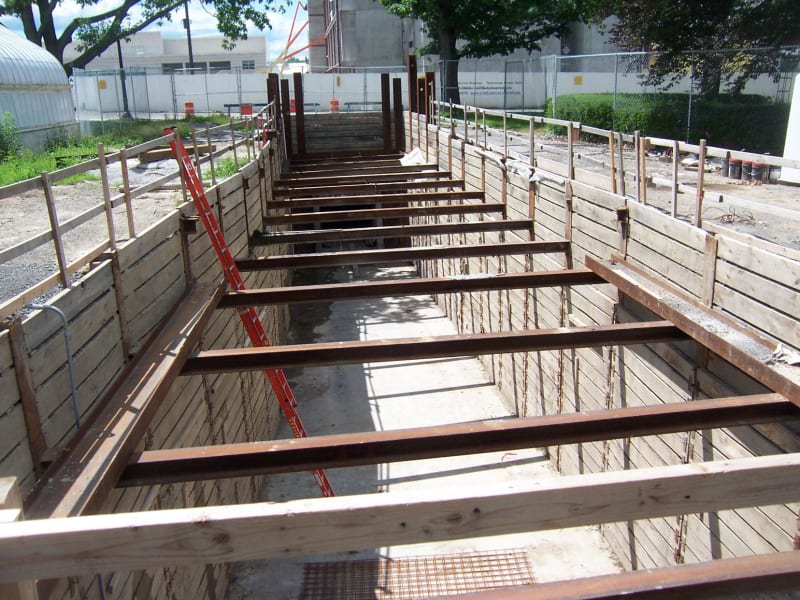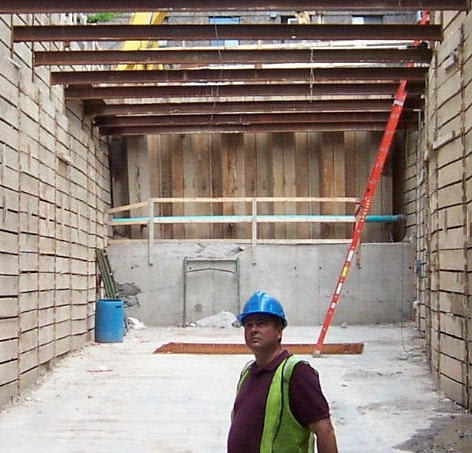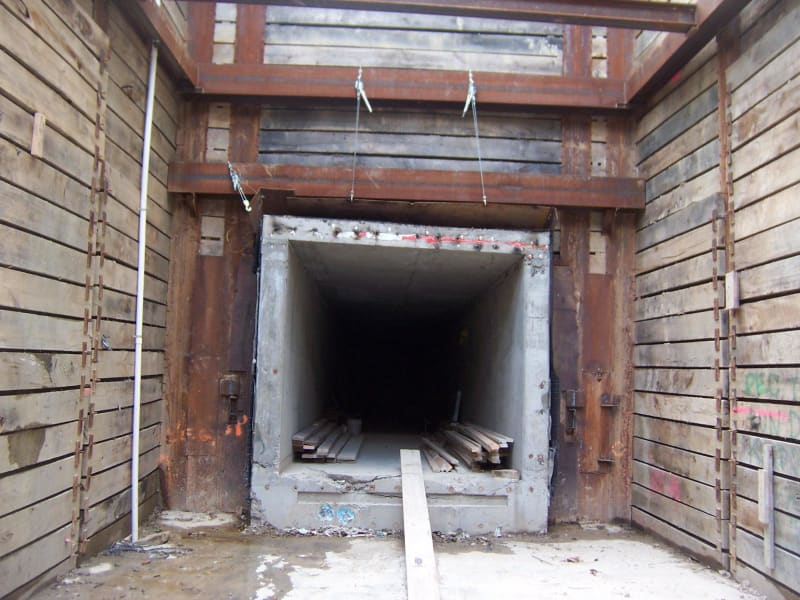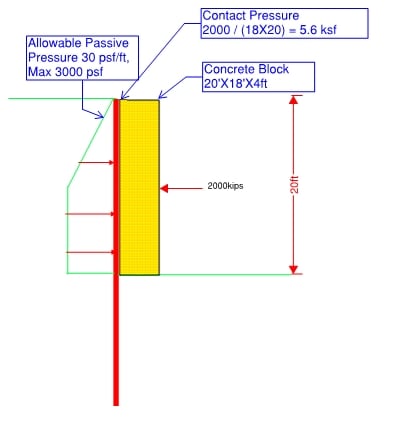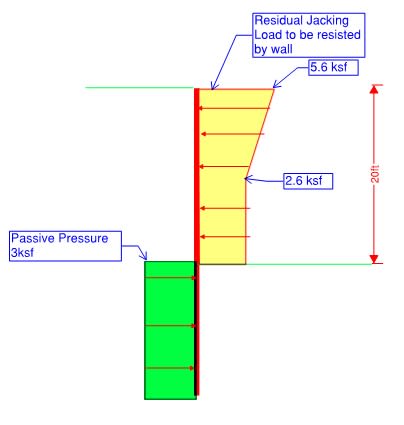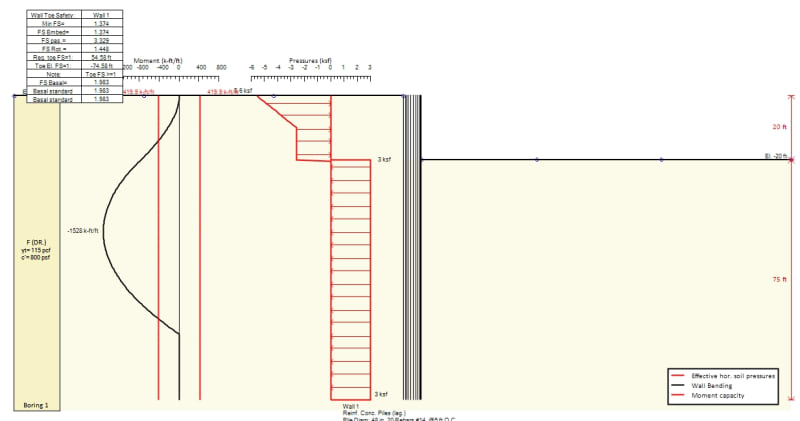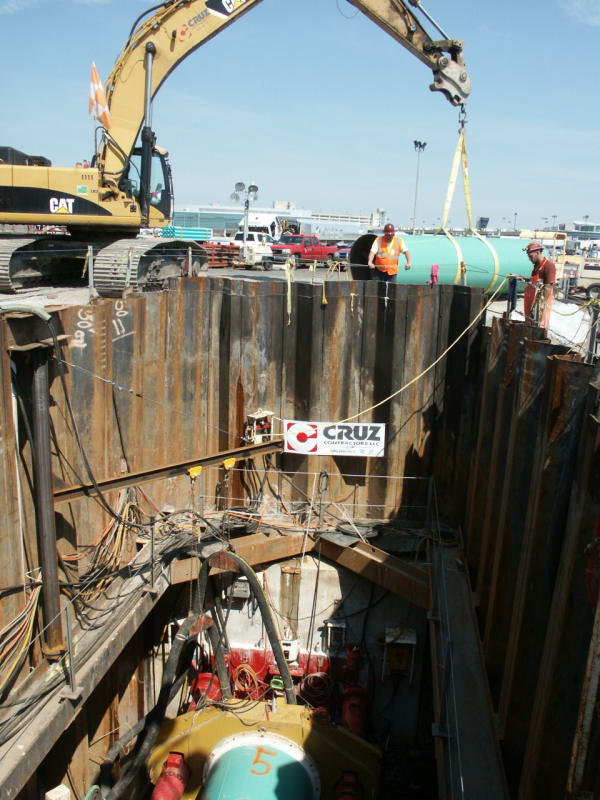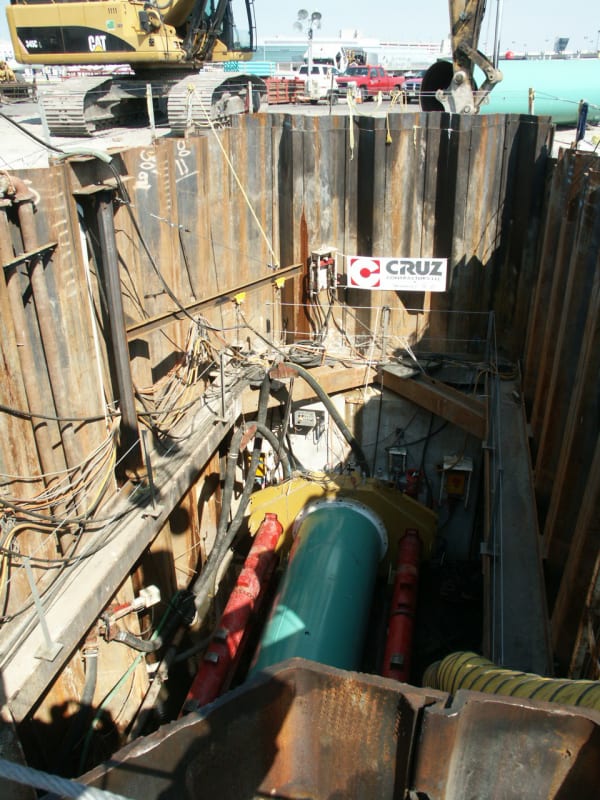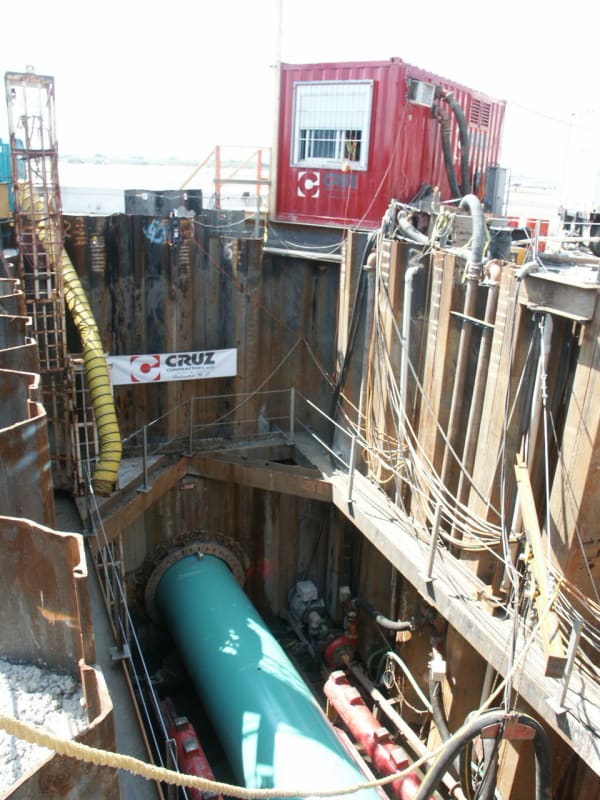Hi fellows,
I am working on project that requires a design for jacking and receiving pit. I have no problem designing the retaining wall to resist the active load and reach bottom of the pit. The problem is the jacking load is 2,000 kips. The maximum concrete block we can install is 18ft X 20ft and the maximum passive pressure that the geotech has recommended is 3000 psf max. When you do the math there is 2.6 ksf (2000kip/18X20 - 3 ksf)of pressure remains to be resisted by retaining wall. The way I design it, I use LPILE and distributed load to come up with a CIDH design. The problem is the CIDH is like 4ft DIA. @ 5 ft OC. and even with maximum reinforcement the deflection is excessive. Any recommendation on how to design jacking pit with such a huge load?
I am working on project that requires a design for jacking and receiving pit. I have no problem designing the retaining wall to resist the active load and reach bottom of the pit. The problem is the jacking load is 2,000 kips. The maximum concrete block we can install is 18ft X 20ft and the maximum passive pressure that the geotech has recommended is 3000 psf max. When you do the math there is 2.6 ksf (2000kip/18X20 - 3 ksf)of pressure remains to be resisted by retaining wall. The way I design it, I use LPILE and distributed load to come up with a CIDH design. The problem is the CIDH is like 4ft DIA. @ 5 ft OC. and even with maximum reinforcement the deflection is excessive. Any recommendation on how to design jacking pit with such a huge load?


